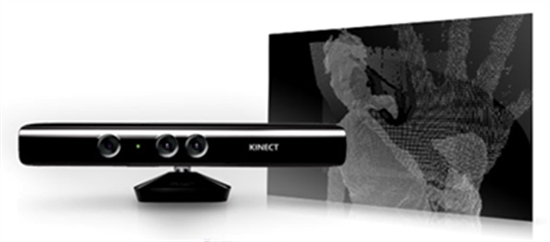The Kinect for Xbox 360 sold over 18 million units in the past year, setting a Guinness World Record for the fastest selling consumer electronics device ever. The sort of work required to get to a “hands-free” motion controller wasn’t easy.
“Without many years of intense R&D efforts, including research investments of hundreds of millions of dollars, and the deep partnership between our research teams, software teams, hardware teams, manufacturing teams, and games studios, Kinect simply wouldn’t exist,” writes Craig Eisler General Manager of Kinect for Windows . “And as amazing a piece of hardware as Kinect is, it is much more than that. At the heart of the Kinect experience lies sophisticated software that meaningfully deciphers the images and gestures captured by the 3D sensor as well as the voice commands captured by the microphone array from someone much further away than someone using a headset or a phone. More importantly, Kinect software can understand what each user means by a particular gesture or command across a wide range of possible shapes, sizes, and actions of real people.”

Microsoft is hoping to expand the possibilities for the Kinect with the launch of Kinect for Windows. The hardware and accompanying software will be available on February 1, 2012 in 12 countries, at a suggested retail price of $249 which includes a one-year warranty, access to ongoing software updates for both speech and human tracking, and the continued investment in Kinect for Windows-based software advancements.
“With Kinect for Windows, we are investing in creating a platform that is optimized for scenarios beyond the living room, and delivering new software features on an ongoing basis, starting with “near mode” (see my earlier blog post for more about this),” added Eisler. “In addition to support for Windows 7 and the Windows 8 developer preview (desktop apps only), Kinect for Windows will also support gesture and voice on Windows Embedded-based devices and will enhance how data is captured and accessed within intelligent systems across manufacturing, retail and many more industries. We are building the Kinect for Windows platform in a way that will allow other companies to integrate Kinect into their offerings and we have invested in an approach that allows them to develop in ways that are dependable and scalable.”
“Although we encourage all developers to understand and take advantage of the additional features and updates available with the new Kinect for Windows hardware and accompanying software, those developers using our SDK and the Kinect for Xbox 360 hardware may continue to use these in their development activities if they wish,” he continued. “However, non-commercial deployments using Kinect for Xbox 360 that were allowed using the beta SDK are not permitted with the newly released software. Non-commercial deployments using the new runtime and SDK will require the fully tested and supported Kinect for Windows hardware and software platform, just as commercial deployments do. Existing non-commercial deployments using our beta SDK may continue using the beta and the Kinect for Xbox 360 hardware; to accommodate this, we are extending the beta license for three more years, to June 16, 2016.”
“We expect that as Kinect for Windows hardware becomes readily available, developers will shift their development efforts to Kinect for Windows hardware in conjunction with the latest SDK and runtime. The combination of Kinect for Windows hardware and software creates a superior development platform for Windows and will yield a higher quality, better performing experience for end users. We are excited for the new possibilities that Kinect will enable on the Windows platform, and to see how businesses and developers re-imagine their processes and their products, and the many different ways each Kinect could enrich lives and make using technology more natural for everyone,” Eisler concluded.
Source: blogs.msdn.com

